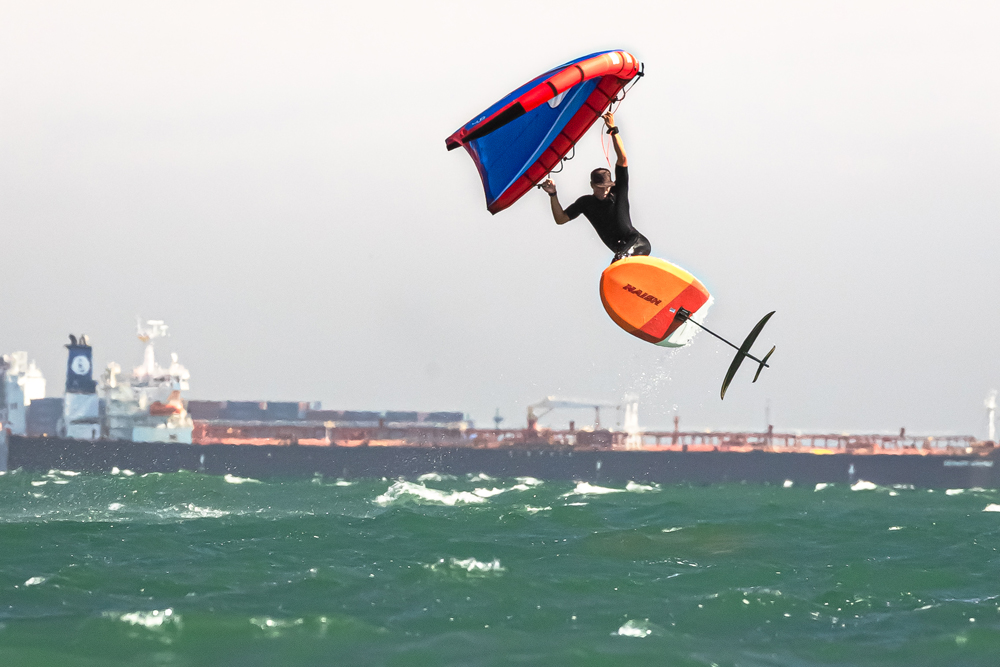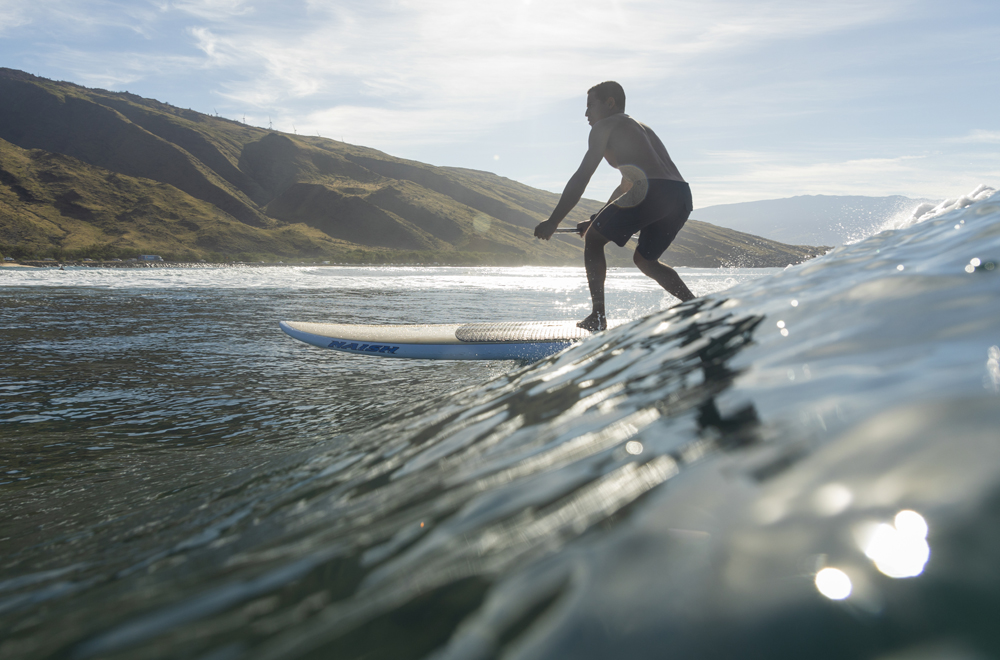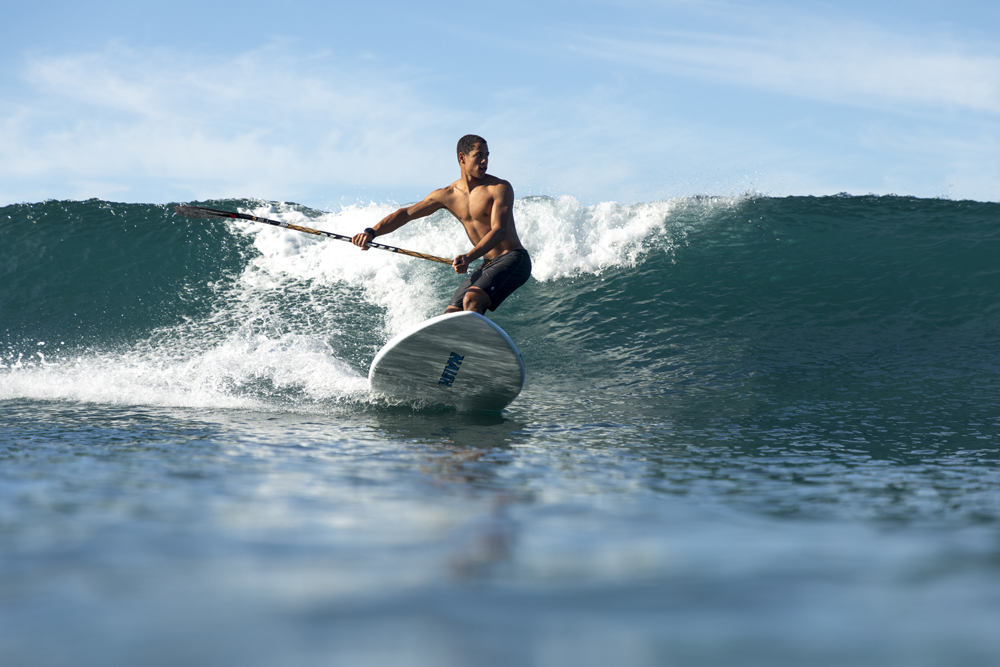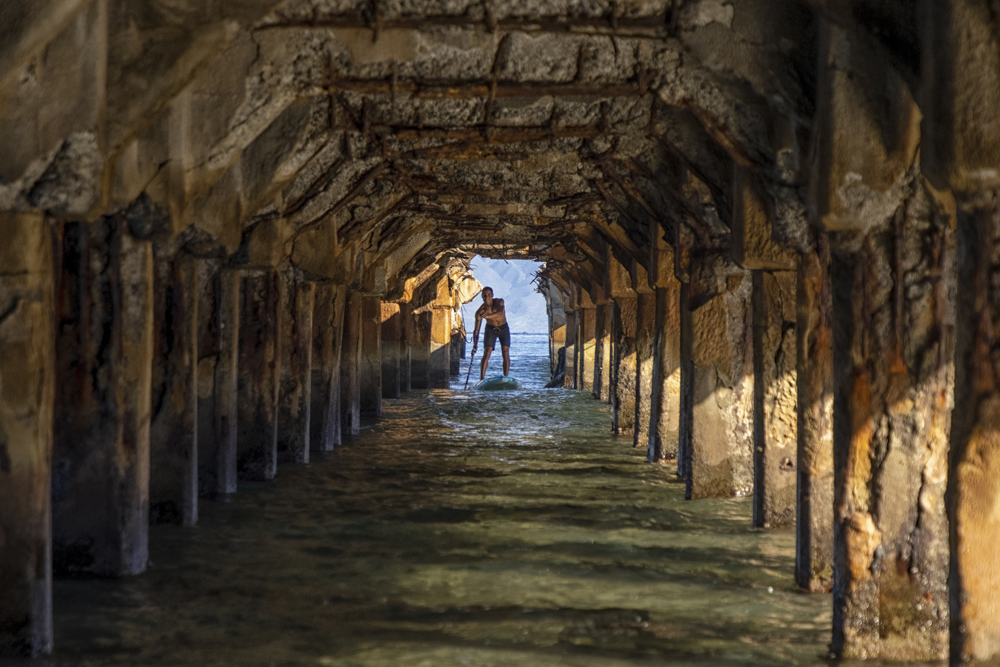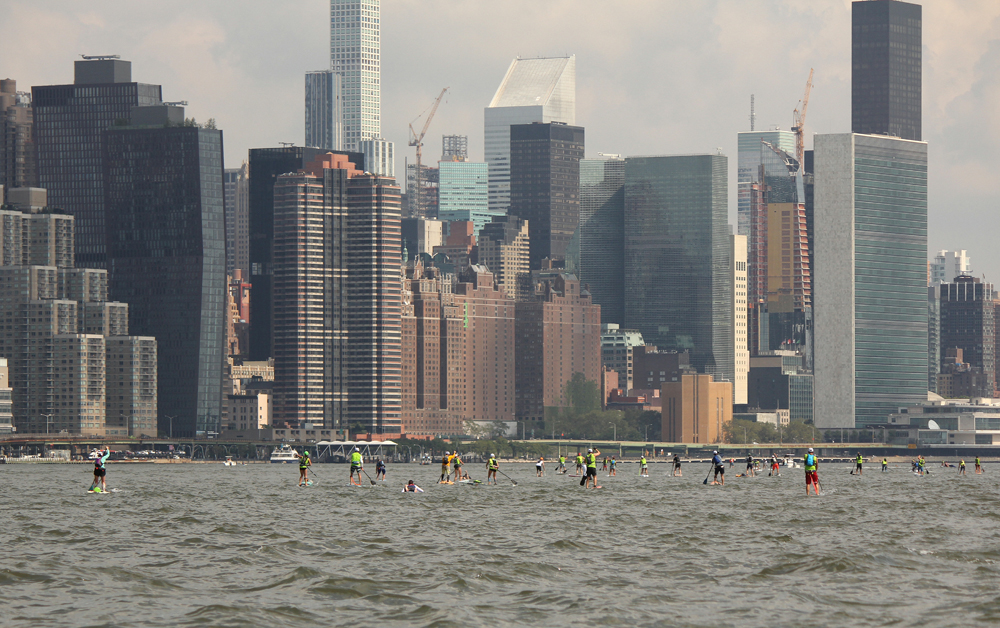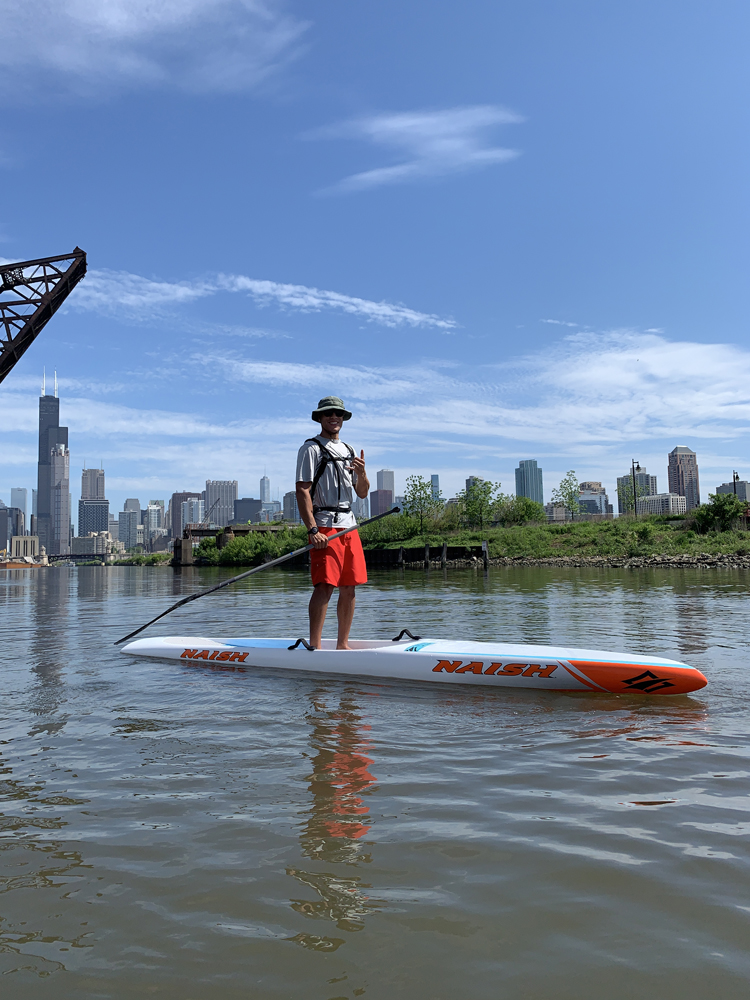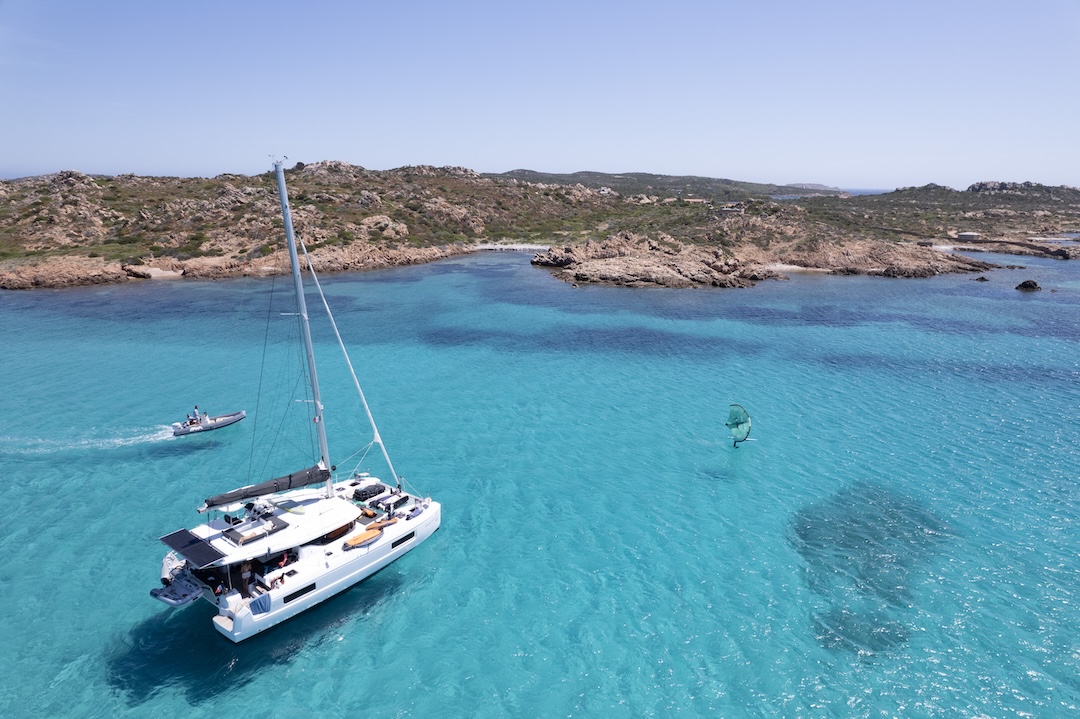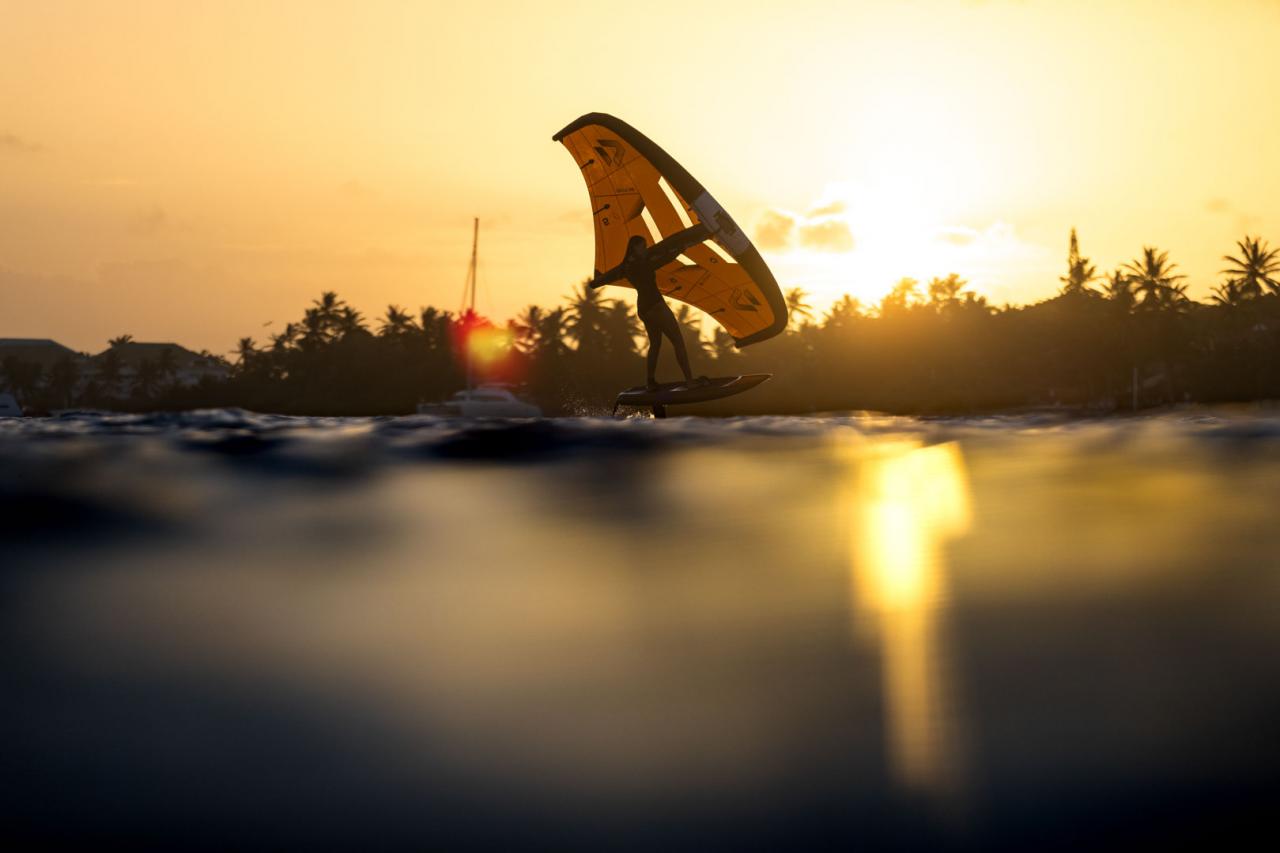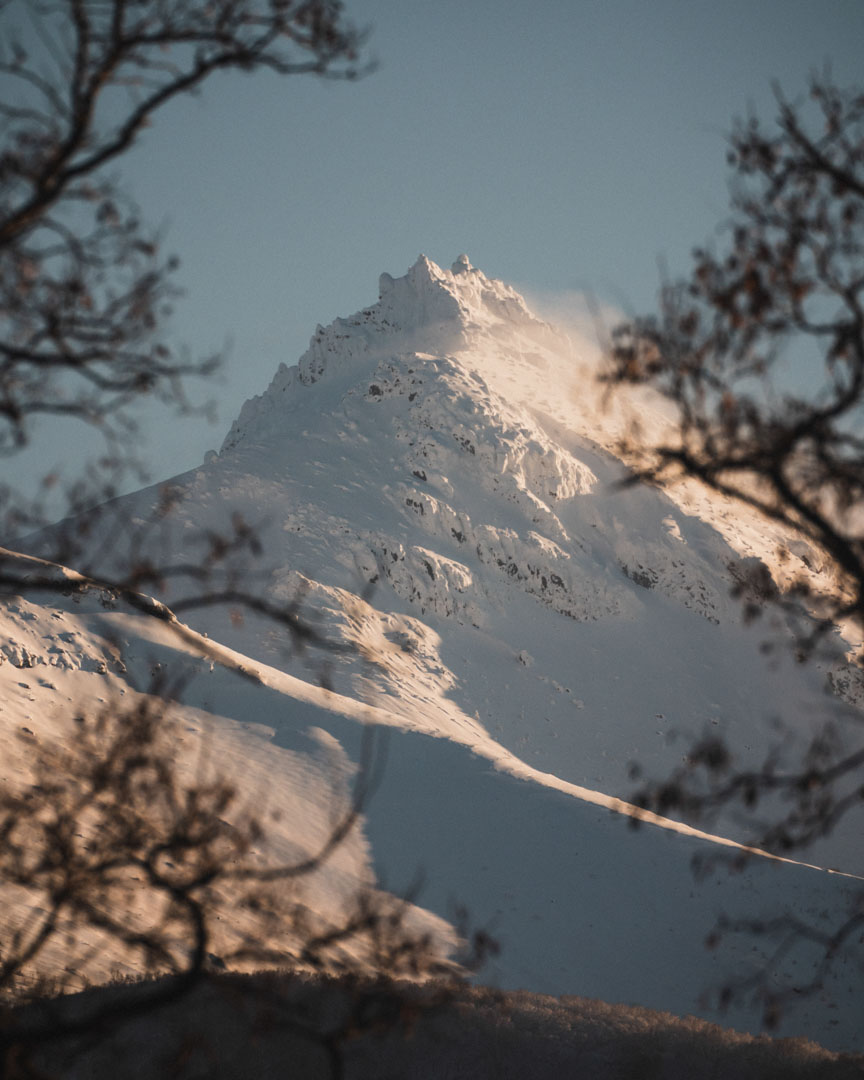The water was in the upper forties, air in the mid-thirties. The wind was light onshore with a four foot swell at a ten second period. After wrestling into my 5/4 mm full wetsuit, 7mm boots, 5mm gloves and hood, I paddled out at 47th Street Beach on Chicago’s South side. The rain had finally stopped and there were a few more hours of daylight. It was shaping up to be an epic early spring surf session on the Great Lakes.
It might be a surprise to most people, but I learned to surf and discovered my passion for the water in Chicago, Illinois on the beaches of Lake Michigan. Growing up in the Midwest, with the nearest ocean about 700 miles away, we spent the summer months at my family’s lake house in Union Pier, MI, swimming, canoeing, skimboarding, bodyboarding, and surfing if we were lucky. But don’t get the wrong impression, it wasn’t anything too glamorous. During the summer, the weather is fair, storms are infrequent, and (depending on ice coverage the previous winter) water temps can reach the upper 60s. The fall, winter, and spring bring colder temperatures and wind. As mid-latitude cyclones work their way from West to East across the country, strong winds produce big wind swells on the Great Lakes. Depending on location and wind direction, you might be lucky to have a fetch distance of a hundred miles or more, just long enough to turn the wind chop into a short period swell. In the heart of winter, water temps in the low 30s are common, and sometimes the lakes freeze over, often for tens of miles from shore, and on rare occasions, almost entirely.I wouldn’t consider Great Lakes surfers to be a picky bunch. We made the best of the conditions we had. I am still tremendously grateful to my parents for driving me to the beach, and helping me put on my 6/5mm wetsuit, boots, gloves, and hood for all those years. Surfing was always on my mind throughout high school, but my main focus was training and competing on my school’s Swimming and Water Polo teams. I had gone stand up paddling a few times, but wasn’t ready to pursue it as a legitimate sport until several years later.
Guided by my passion for the water, I took a strong interest in joining the U.S. Coast Guard - the humanitarian missions of the service such as Search and Rescue, Law Enforcement, and Drug Interdiction were something I could see myself choosing as a career. I applied to the U.S. Coast Guard Academy (CGA), a four year program that graduates students with a bachelors degree and as Officers in the Coast Guard. The stars aligned and I was accepted. I found myself headed to Connecticut on the East Coast in the summer of 2016, where I would spend the next four years.
Although I was juggling school work, sports and military training, I was able to escape to the nearby beaches of Rhode Island and Long Island, NY such as Green Hill, Matunuck, Point Judith, Narragansett, and Long Beach for some epic surf during my time at the CGA. I became great friends with some of the other surfers and kitesurfers that formed the heart of the Academy’s Surf Club. During my junior year, after slowly losing interest in Water Polo, I was ready to find something new. It was then I rediscovered stand up paddling, something I had done only recreationally years prior. Poking around online, I saw a few videos of SUP racing. After learning more and finding out there was competition in stand up paddle racing at an elite level, I immediately knew it was what I was looking for. It demanded fitness, balance, surf skills, and an understanding of ocean conditions.
I found my first board on Craigslist. It was a 12’6 SIC. In the fall of 2018, I added three to four SUP race training sessions per week to my training program. The CGA’s campus in New London, CT, right on the shore of the Thames River, became my training ground. The river offers great conditions for training, including flat water on calm days, choppy conditions when the wind is up, and only a few miles to the Atlantic Ocean to get into the surf or launch for a downwinder.
Through fall of 2018 and into winter I continued to train. I had my eye on entering as many races as I could the following spring and summer. I was also working closely with my mentors and Academy leadership to prepare for the next summer, when I would be spending eleven weeks at an operational Coast Guard unit somewhere in the U.S.
There were two 87’ Coast Guard Patrol Boats stationed in Honolulu, HI (they have since been decommissioned). I knew that both would give me the exact professional development opportunity I was looking for and also allow me to continue in my pursuit of SUP training and competition. This, to me, seemed the perfect balance of work and play.
Around that same time, I checked to see which competitive SUP events were scheduled for the coming summer of 2019. One, more than any other, caught my eye: Molokai 2 Oahu (aka, the infamous “M2O”). This 32-mile open ocean channel crossing was definitely above my skill level, but I couldn’t get the idea of racing in it out of my head. Early the following year I got good news: I was headed to Honolulu on assignment to the 87’ Coast Guard Cutter AHI! This was a perfect scenario as it would afford me the opportunity to train in ideal conditions and race with some of the world’s best paddlers. Who says no to an extended stay on Oahu?
I began training and studying everything I could find about the infamous Oahu downwind runs. I just couldn't shake the idea of racing in Molokai 2 Oahu that upcoming summer. So I found the race director’s email on the M2O website and reached out to him, explaining my situation. I gave a report on the training I had done up to that point and my background at the Coast Guard Academy. After a few weeks of back-and-forth emails, he agreed to consider me for entry if I submitted a time trial for a twelve mile flat-water paddle, and kept him closely updated on all of my training and downwind runs.
After that, I religiously maintained a training journal and submitted my application. Then, on April 1st I received some of the best news I could have imagined. I had made the start list for M2O! All the training and paddling that winter in my drysuit, wetsuit and 7mm booties, in the brutal cold with ice freezing on the deck of my board had paid off! Despite how seriously I had been taking my training, I almost couldn’t believe that I had been accepted. It was the most amazing feeling to have worked so hard, with my chance of acceptance seeming so slim, and to have been given such an amazing opportunity. I continued to train as much as I could while I finished the academic year and got ready to leave for Oahu in late May.
Once I arrived in Oahu, I got situated on the Coast Guard Cutter AHI. It was a dream come true. I got to know the crew and became familiar with our patrol schedule and patrol area which spanned the entire State from the island of Hawaii to Kauai and Niihau. We spent most of our time conducting Search & Rescue and Law Enforcement, primarily in the waters West of Big Island and the area between Maui, Molokai, Lanai, and Kaho’olawe. Those patrols are some of my best Coast Guard memories: anchoring off Kona, in Maalaea Bay with views of Haleakala, and seeing the islands from the clear blue waters was an incredible experience.
I began looking for other paddlers to train with on Oahu and got in touch with Robert Stehlik of Blue Planet SUP and Jeff Chang, who organized weekly time trials and downwind runs. It was great to connect with their crew, as most of that group had done Molokai 2 Oahu or the Maui to Molokai race multiple times prior. They coached me in downwind paddling technique which was just what I needed after building a high level of fitness from my previous six months of training.
I had stayed in close contact with Mike Takahashi, the M2O race director, and after I let him know I was looking for a 14’ board for the race, he put me in touch with Michi Schweiger, the team manager at Naish. I reached out to Michi and coordinated to have a 14’ Naish Maliko race board sent to Oahu. On days when I didn’t paddle with the training group, I would paddle from the Coast Guard Base in Oahu to Diamond Head and back.
Training with the group, as the summer went on and M2O approached, we started doing longer and longer downwind runs. The standard SUP downwind run was the Hawaii Kai run, from Hawaii Kai or Port Lock to Kaimana on the other side of Diamond Head. As summer progressed we started doing Sandy’s to Kaimana, from Sandy Beach on the East side. This run is great training for M2O since the first half is in the tricky conditions that are the last third of the M2O course. As the wind swells from the Ka’iwi channel near Oahu, it hits the cliffs that form the East side of the island and creates serious backwash. At this point, the normal channel bumps disappear and the water is turbulent with waves and chop running in all directions. The more experience in these conditions the better, to condition your legs to handle the bombardment and to read the swell as much as you can. Those training sessions were essential to dialing in my nutrition and hydration plan, experimenting with different hydration packs and food options like electrolyte powders and gels.
The Molokai 2 Oahu paddle challenge is always on the last Sunday of July. Two days prior to the event, on Friday evening, I flew to Molokai with my dad who had come to be my support crew on my escort boat. We stayed at Kalua Koi which is just up the beach from the start line, and spent Saturday relaxing and getting to know some of the other paddlers who had come from all over the world for the 32 mile crossing the next day. The feeling of community and camaraderie was unlike anything I had ever experienced at a race or sporting event. Paddlers from ocean sport hotspots like Oahu, Maui, California, lesser known areas like Mobile, Alabama and the Great Lakes, or overseas from France, Spain, Japan, Australia, and New Zealand all coming together to challenge themselves against the Ka’iwi Channel – another reason this race is so special.
A feeling of excitement and anticipation permeated the air the next morning. Everyone was eager to start as the conditions looked perfect. The wind had been blowing 25 to 30kts the previous few days and the tidal current forecast looked like it was going to be the best day in years. After my dad swam to our escort boat from the beach and I made my way to the start line, the horn finally sounded and we were off!
I settled into a good rhythm, reading the bumps and surfing as much as possible to conserve energy. The first few hours went by quickly and soon I found myself in the middle of the Channel with no other paddlers or escort boats in sight. Oahu was in view from the start line, but out in the channel the swells were so huge, I couldn’t see further than a few hundred yards in any direction. Without my destination in sight, my greatest challenge wasn’t physical. It was mental. Fatigue had started to creep in and I found it difficult to maintain a good course aimed towards Oahu. Luckily my boat captain, Elliot, who was also stationed on the Coast Guard Cutter AHI, knew those waters better than anyone. Driving alongside, he gave me clear directions and kept me from paddling too far south and missing the Island all together.
With about 6 miles to go I was deep in the crazy backwash just East of Oahu. At this point, my fatigue was total. I just put my head down and had to grind my way around Koko Head and China Walls. After rounding China Walls, the last mile and a half of the course is straight upwind which makes the M2O finish one of the toughest parts of any race there is. I was welcomed to Oahu at the finish line by a few friends from the Coast Guard Cutter and from the Academy. After finishing the race, I was overcome with joy and relief. The feeling was pure stoke. Having set such a high goal for myself and being so new to the sport, everything had fallen into place. What I had visualized for months prior, I had actually accomplished.
I left Oahu the day after the race and headed back to Chicago. It was bittersweet leaving the Island. I was still overcome with emotion from the day before but also sad to say Aloha to all of the friends I had made that summer. Once home, I had a few days of rest before getting ready to head to New York City for my next challenge.
The SEA Paddle NYC is a 25-mile flat water race around the island of Manhattan to benefit environmental preservation and non-profit autism organizations. It was scheduled for the coming Saturday (six days after M2O). Like the Molokai 2 Oahu, The SEA Paddle is more than just a race - it is an incredibly challenging and rewarding experience. Paddlers experience New York City in an incredibly unique way: by seeing it from the water. From the race start on the East River right underneath the Brooklyn Bridge, to battling the strong currents at Hell Gate and paddling the length of the Hudson River in side chop and wind, to finishing at Chelsea Piers on the Hudson, it is an incredibly challenging and unique experience for any SUP racer. While all 25 miles are on the East River, Harlem River and Hudson River, the water is anything but calm. Just like the streets of NYC, the waterways are incredibly busy. Water taxis, ferries, recreational boats and NYPD to name a few all operate along those rivers. The turbulence and wake caused by that much vessel traffic makes the water incredibly choppy. I didn’t expect the SEA Paddle NYC to be a simple flat water race, but was shocked to find myself battling to stay upright on my board in those crazy conditions. At times, it was undoubtedly more difficult than the Ka’iwi Channel during the Molokai 2 Oahu race.
The start of the SEA Paddle NYC was chaotic. Over a hundred paddlers took off in a big swarm from beneath the Brooklyn Bridge. Most flat water races start in a sprint, as paddlers jockey for position and draft trains form. However, the choppy water of the East River made this race start differently, and we were all paddling on our own for about the first mile.Once things settled down, I found myself in the second group behind the lead pack, with a few solo paddlers strung out between the groups. I settled into a rhythm of paddling and knew I wanted to catch the lead pack in order to have a chance at finishing within the top five. I decided my best option was to pull away from the second group, bridging the gap to the lead racers by overtaking the solo paddlers in between one at a time. Then the lead paddlers would be within striking distance. Over the next 10 miles, I slowly made my way forward until I was directly behind the lead pack as we made the turn from the Harlem River south onto the Hudson River. Once around the bend and approaching the George Washington Bridge from up near Columbia University, we encountered a brutal 15 knot head wind.
Our group broke up and I found myself alongside my friend Tony, in second and third place, respectively. We were a few hundred yards behind the leader. Together we battled the headwind toward the finish at Chelsea Piers. With about a mile to go, Tony pulled ahead, and I finished in third place overall just a few minutes behind. It was a brutal race, battling the heat and managing hydration. Nothing felt better than relaxing and enjoying the awards party later that evening with the other paddlers, many new friends and my family. Meeting people and enjoying the SUP community is the best part of participating in events like the SEA Paddle NYC, especially since it raises money for environmental preservation and non-profit autism organizations.
Throughout this time, I kept in close contact with Michi Schweiger from Naish, sharing my race results with him and any photos I had of my Maliko racing board in action. Later that year, I was invited to come onboard as a SUP team rider. I made my first trip to visit the Naish Team at headquarters in Haiku, Maui in December of 2019. Since then I have continued to train and race, and have branched out into a few other disciplines: pursuing foiling, SUP surfing, and winging. I graduated from the Coast Guard Academy in May, 2020, and received an assignment to the Coast Guard Cutter ROBERT WARD in San Pedro, CA. Since then I have been living in Huntington Beach, CA continuing to stand up paddle, surf, foil, wing and eager to get back to participating in events. Mahalo.

